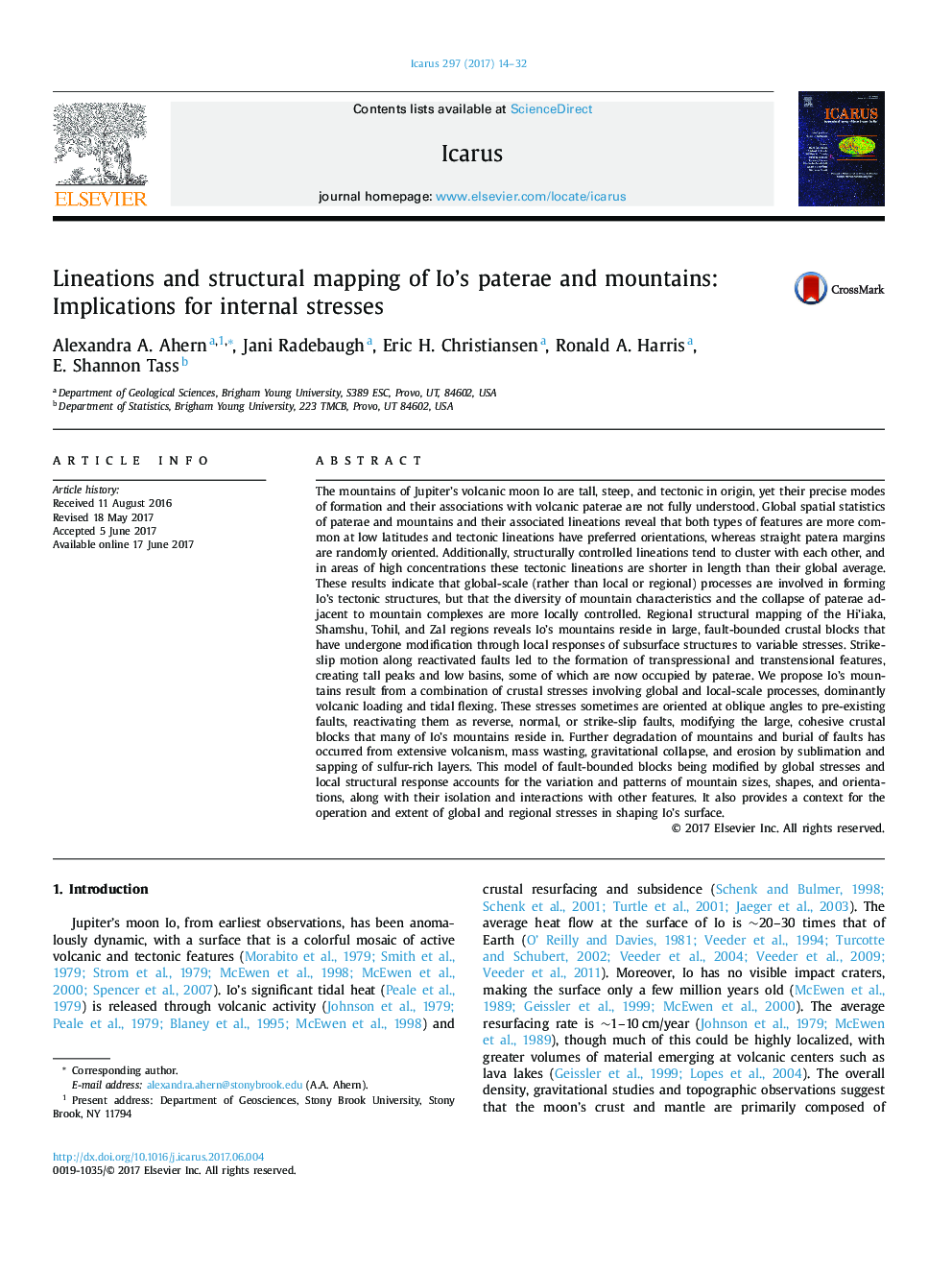| کد مقاله | کد نشریه | سال انتشار | مقاله انگلیسی | نسخه تمام متن |
|---|---|---|---|---|
| 5487164 | 1523494 | 2017 | 19 صفحه PDF | دانلود رایگان |
- Lineations on the surface of Io, associated with its mountains and paterae, do not indicate that mountains and paterae are always genetically related, but that relationships between the two types of features may be governed locally.
- Io's mountains form and change due to a combination of crustal stresses involving both global and local-scale processes, dominantly volcanic loading and tidal flexing.
- Crustal stresses reactivate subsurface faults, sometimes obliquely, modifying the large, coherent crustal blocks that many of Io's mountains reside in.
The mountains of Jupiter's volcanic moon Io are tall, steep, and tectonic in origin, yet their precise modes of formation and their associations with volcanic paterae are not fully understood. Global spatial statistics of paterae and mountains and their associated lineations reveal that both types of features are more common at low latitudes and tectonic lineations have preferred orientations, whereas straight patera margins are randomly oriented. Additionally, structurally controlled lineations tend to cluster with each other, and in areas of high concentrations these tectonic lineations are shorter in length than their global average. These results indicate that global-scale (rather than local or regional) processes are involved in forming Io's tectonic structures, but that the diversity of mountain characteristics and the collapse of paterae adjacent to mountain complexes are more locally controlled. Regional structural mapping of the Hi'iaka, Shamshu, Tohil, and Zal regions reveals Io's mountains reside in large, fault-bounded crustal blocks that have undergone modification through local responses of subsurface structures to variable stresses. Strike-slip motion along reactivated faults led to the formation of transpressional and transtensional features, creating tall peaks and low basins, some of which are now occupied by paterae. We propose Io's mountains result from a combination of crustal stresses involving global and local-scale processes, dominantly volcanic loading and tidal flexing. These stresses sometimes are oriented at oblique angles to pre-existing faults, reactivating them as reverse, normal, or strike-slip faults, modifying the large, cohesive crustal blocks that many of Io's mountains reside in. Further degradation of mountains and burial of faults has occurred from extensive volcanism, mass wasting, gravitational collapse, and erosion by sublimation and sapping of sulfur-rich layers. This model of fault-bounded blocks being modified by global stresses and local structural response accounts for the variation and patterns of mountain sizes, shapes, and orientations, along with their isolation and interactions with other features. It also provides a context for the operation and extent of global and regional stresses in shaping Io's surface.
Journal: Icarus - Volume 297, 15 November 2017, Pages 14-32
